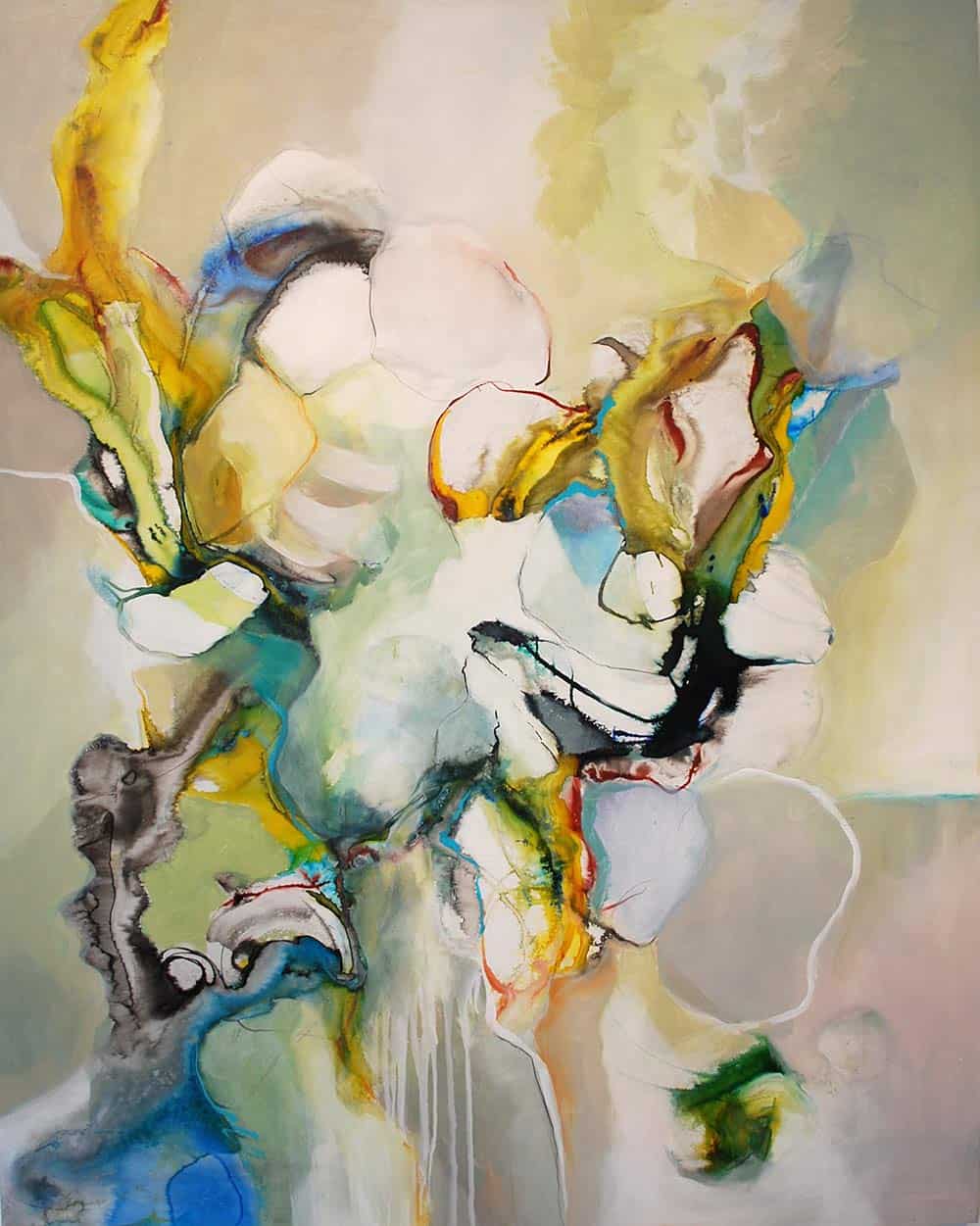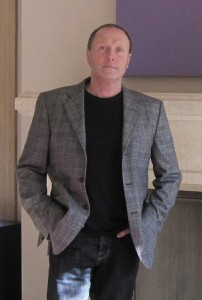A.A. for Artists (Not What You Think)
In his 2012 novel Back to Blood, Tom Wolfe devotes a chapter to the art-fair feeding frenzy that is Art Basel Miami Beach, introducing a minor presence named Marilyn Carr, who is known to her principal client as “A.A.,” short for art adviser. As described by another character, she is “pretty and young and, it almost went without saying, blonde. Her clothes were sophisticated yet very simple….She was in the know. Advising rich people…about what very expensive art to buy was her business, and she knew all about this ‘fair.’” A.A. makes pronouncements like “No Hands—that’s an important concept now” and “No cutting-edge artist touches materials anymore, or instruments.”
“I don’t represent artists,” says consultant Eva Zervos, “but my favorite people have come through other artists.”
A.A. is an exaggeration, of course, but maybe not too far off the mark. I once profiled a high-end art adviser for ARTnews, a woman who was similarly glamorous and emphatic in her judgments. She worked mostly for private clients, and had done an amazing job of tracking down Hirsts and Shermans, Judds and LeWitts. She lived in a beautiful Upper East Side apartment and rented a $75,000-a-season beach house in Southampton. Though some of her pronouncements were wackdoodle (“Modern art begins in the Renaissance”) and she seemed to get Manet confused with Matisse, one had to envy her status as an art broker to the moneyed elite. Nice work, if you can get it.
But there are other kinds of art advisers as well, and when a Vasari21 member wrote to me a couple of months ago to ask if I knew of anyone who could help place some of her earlier work—she was about to move and didn’t want to cart all her paintings to a new studio—I promised to look into the matter.
It turns out there are all manner of brokers or art reps or consultants in probably every major city, and most seem willing to look at work by artists unknown to them. Cookie Ashton, a painter in Houston, easily reeled off the names of three in her area: Arts + Artisans Consulting, Kinzelman Art Consulting, and Skyline Art Services. “They all deal with a lot of artists and they make no commitments and offer no contracts. If they think they can use your work, they call you,” she says. “I work with them in such a way that it doesn’t interfere with anything I do in the galleries.

Cookie Ashton’s Dreamscape. The Houston-based artist works with advisers “in a way that doesn’t interfere with her dealings with galleries.”
“The client pays for the piece and pays the commission,” she adds. “I never lower my prices. I’m not going to offer a discount just because I want to sell the art.”
Peter Roux, an artist in the Boston area who makes richly poetic landscapes and abstractions, has worked with several advisers over the years. In the past, he’s also been contacted by the in-house curator for a privately held medical software company. “From the beginning, for reasons of which I’m not sure, the founders were committed to setting up spaces for fine art.”

Two works by Peter Roux, who has been successfully placing art through consultants for much of his career
But an in-house curator is somewhat of a rarity. More typical is the project-based consultant, such as Elizabeth Erdreich White Fine Art in Boston, who counts among her clients Ernst & Young, Price Waterhouse Cooper, and a long list of architecture and design firms. “She works with artists from all over the world,” says Roux, “but she doesn’t have a big online presence.” Two others in the Boston area who have placed his paintings are Jacqui Becker and Eva Zervos. “I buy artwork in many different categories,” says Zervos. “It could be poster prints to works on paper to canvases. I do a lot with glass and site-specific pieces. I don’t represent artists but my favorite people have come through other artists.”
This middle tier of art consultants acts basically the same as the high-end A.A.s who set their sights on the big game in the art market. They attempt to sound out their clients’ needs and tastes, understanding that these are people who usually don’t make art a priority, are not going to do studio visits or read magazines, but want a good-looking collection nonetheless. “I consider myself very much a chameleon,” says Zervos. “I immerse myself in a project, trying to understand the client’s needs.
“I’m always happy to look at art because I never know what my project requirements will be,” she adds. “For the past six to eight years I’ve been dealing with much more abstract work.” She says she is most easily contacted via email. “I have a subfolder when I keep names.” If she likes the work, she will get back to the artist when a project comes up.

Tom O’Connor, based in San Francisco, often checks out work by artists new to his advisory services.
Consultants in other parts of the country also say they are open to looking at new artists. Tom O’Connor of O’Connor & Associates Art Advisors in San Francisco claims he will respond whenever possible. “I might say, ‘I like this work but I don’t have anywhere to place it right now. Be patient. We’ll get back to you.’”
Roux and others advise artists who are new to consultants to begin with a Google search. “Look at the kind of art they place,” says Roux, “and see if your work complements what their clients have collected. Also see if they have a Facebook page, which may signal that they are aggressively looking for artists.” Then use a service like Constant Contact to keep advisers informed when you have a new body of work. If it seems a nuisance, they always have the option to unsubscribe. One further piece of counsel: In your initial approach to a consultant, embed two or three images in the text of your email. Then add your website link. You needn’t go on at great length, but a couple of teasers will whet an adviser’s interest.
Over the years, Roux has forged a career by mixing up gallery shows with sales to art consultants. “With consultants you don’t have openings, you don’t have shows, you don’t have a cult of personality. But I’m making a living and that’s always been my goal. These days artists have many more opportunities for controlling their market, and they should investigate all of them.”
Carpe Diem!
Ann Landi
Photo credits: 會展廣場辦公大樓基座商場, ArtOne at Convention Plaza, Harbour Road, Wan Chai North, Hong Kong
Thank you for this column, Ann. I think working with art advisors can be an important route to selling work outside of traditional bricks and mortar galleries.
Starting in the early 1990s, I worked fairly frequently with art advisors / consultants who placed my work. Most were wonderful, ethical people who respected the artists, but I caution everyone to do due diligence before entering into a work relationship. I count myself among those artists who can share painful stories of work that was damaged while on consignment (no insurance and therefore no payment), or who chased after consultants who failed to pay me in a timely manner (or at all) for work that had sold.
Wear your artists’ cap when you are working in the studio, but when you are out in the world to market the work, have your feet firmly on the ground and ask tough questions.
Ann, Thank you for this information.
This article on “consultants” and marketing ones work through art agents is excellent and most
welcome. It seems thoroughly well researched . Thank you Ann !
Great article, thank you for all the information!
As a gallery artist I’ve also worked with several art consultants over the years. I found it to be a
rewarding experience. I worked a project with Eva Zervos in the early 2000’s and found her very professional to my needs. I would gladly use an artistic consultant over gallery representation.